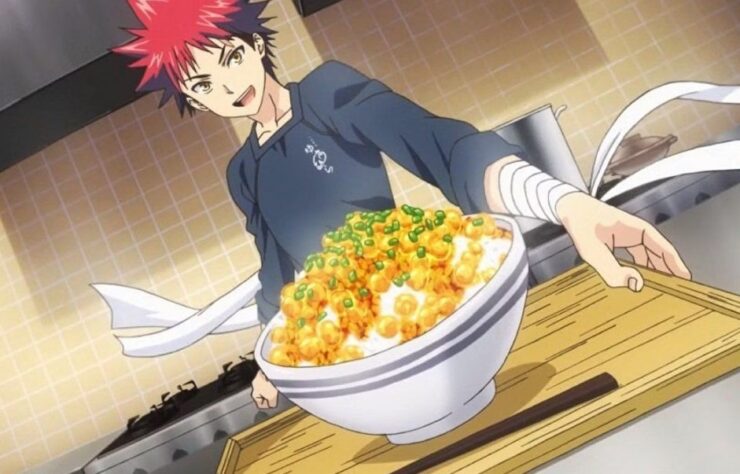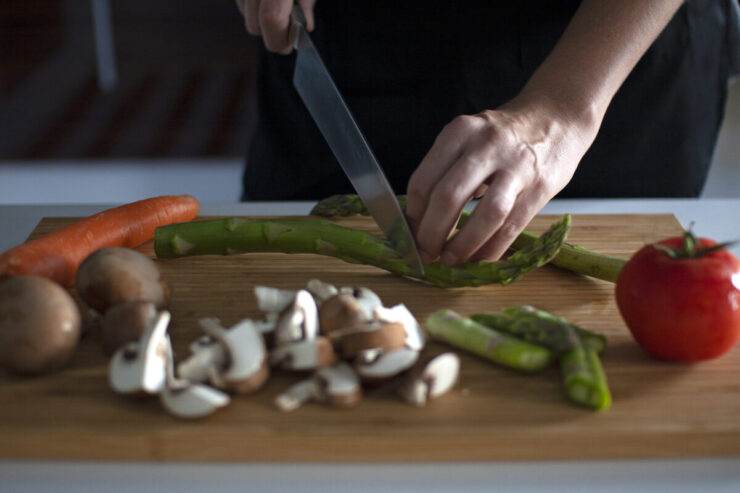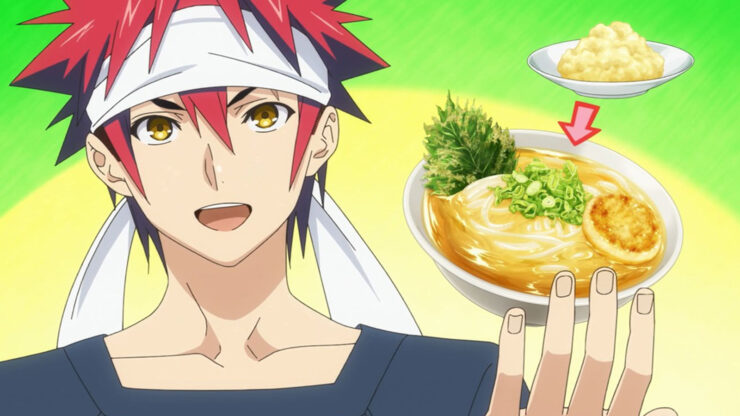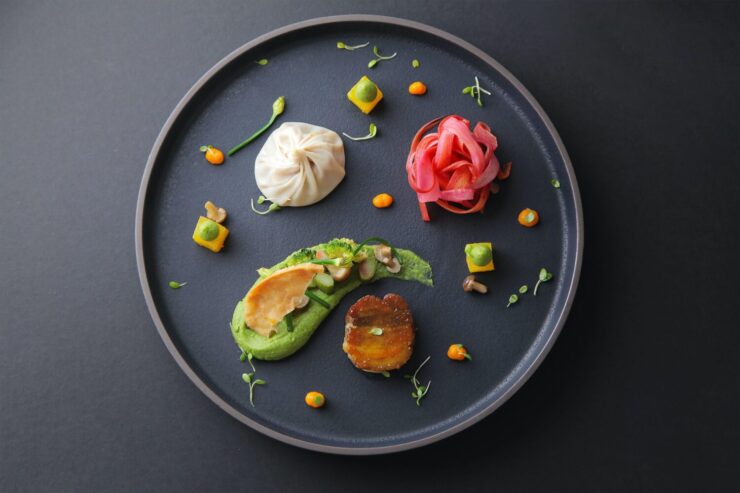Those who enjoy food might have heard of Food Wars! Shogukeki No Soma. A manga series that Yuto Tsukuda wrote and illustrated, the story is about Soma Yukihira’s struggle to become the best chef in the world. His father ran a small restaurant that he had been helping him. When his father closed the restaurant, Soma had to attend Totsuki Academy, an elite culinary school.
At the school, his journey as a chef begins. He faces off against other students in food wars – cooking battles judged by experts. Slowly but surely, he rises through the ranks.
Undoubtedly, the anime has also been enjoyed by chefs and eaters alike.
However, how different is the anime compared to culinary life in the real world? Find out in this article!
The Cooking

The cooking element of the series has been compared to an old anime series, Yakitate! Japan. The same is also the element of a culinary professional; for Shokugeki No Soma, Chef Yuki Morisaki oversees the recipes.
We don’t see a cutlery dispenser yet, but the cooking part is verifiable. The series features different cooking techniques worldwide. One notable technique is the crushed “something” breading for fish is “kaki no tane” (柿の種), essentially soy-flavored rice crisps made to resemble Japanese persimmon seeds.
The rice crisps are close to panko crumbs, but a soy flavor differentiates them from them. In Japan, Koromo-age is a popular batter-frying technique.
The Science
Another technique uses honey as a tenderizer. However, the food science behind it needs to be explained better. Using honey in cooking goes back to the Middle Ages; honey-cured ham and baked gammon coated with honey and mustard were part of the time staples.
Honey contains enzymes that break down and process protein and carbohydrates, such as amylase, sucrase, and proteases (a group of enzymes that break down proteins into amino acids). Although honey’s enzymes help process both, the science behind it focuses on how your body breaks down the process.
Honey absorbs moisture well. However, when you pull water out of a piece of meat, that meat will become more floppy, and the tough tissue and collagen of the beef are unaffected. Marinade with honey and vinegar that make meat more tender and supple are easy to find in the market.
The science could be explained better in the anime, making it questionable. Other terms used in-series suit a native audience more, like A5 meat being pure Kagoshima Prefecture-produced Wagyu beef; this beef label is unavailable in other countries.
Exaggerated Cooking Speed

In “Food Wars,” the preparation of dishes often unfolds at a breakneck speed, aligning with the anime’s dynamic and fast-paced storytelling.
This depiction contrasts sharply with the reality of professional kitchens, where even though efficiency is paramount, the time taken to prepare dishes, particularly complex ones, is considerably longer.
Real-life cooking demands meticulous attention to detail, the best tools such as those from dispensersolution.com, from precise measurements to careful monitoring of cooking temperatures and times.
High-quality dishes, especially those involving multiple components or intricate techniques, require a substantial amount of time to prepare. This discrepancy between the anime’s portrayal and real-world cooking highlights the importance of patience and diligence in culinary artistry.
Over-the-Top Presentation
“Food Wars” often features dishes with stunning, artistic presentations, some of which defy gravity and reality. This is in stark contrast to real-world culinary arts, where presentation, while important, remains grounded in practicality and functionality.
Professional chefs focus on creating visually appealing dishes, but they also ensure that the presentation is achievable and enhances the eating experience.
Real-life plating techniques prioritize aesthetics that complement the dish’s flavors and textures, without overshadowing the essence of the food itself.
The balance between beauty and practicality in food presentation is a key aspect of culinary professionalism, contrasting with the anime’s more fantastical displays.
Dramatized Cooking Battles
The anime is renowned for its intense, high-stakes cooking battles, a central element that adds drama and excitement. However, real-world cooking competitions, while competitive, are generally far less theatrical.
The outcomes of real competitions, though important to the participants, rarely have the life-altering stakes as depicted in “Food Wars.” Actual culinary contests focus on skill, creativity, and execution rather than dramatic confrontations.
Judges in these competitions assess dishes based on established criteria, with a more analytical and less sensational approach. This realistic portrayal of cooking competitions reflects the professional nature of the culinary world, where skill and expertise are paramount.
Instant Mastery of Techniques

In “Food Wars,” characters often display an almost instantaneous mastery of complex cooking techniques or the ability to invent novel ones effortlessly. This contrasts sharply with the reality of the culinary world, where mastering cooking skills is a gradual process that takes years of dedicated practice and learning.
Professional chefs spend considerable time honing their craft, learning from failures, and gradually perfecting their techniques. The journey to culinary expertise is long and requires persistent effort, experimentation, and refinement.
The anime’s portrayal of quick mastery serves the narrative but doesn’t accurately reflect the dedication and time required to become proficient in the culinary arts.
Unconventional Ingredients and Combinations
“Food Wars” frequently explores the use of unusual ingredients and unexpected flavor combinations, often leading to astonishing culinary creations. While innovation is a key part of culinary art, in the real world, chefs carefully consider the practicality and palatability of their ingredient choices and combinations.
Real-life cooking involves a deep understanding of flavor profiles and how different ingredients interact with each other.
The anime’s portrayal of unconventional culinary experimentation is entertaining but often strays from the realistic constraints and considerations of professional cooking, where balance and harmony of flavors are crucial.
Emotional Responses to Food
The anime is known for its depiction of extreme emotional and sometimes physical reactions to food. While it’s true that food can evoke strong emotional responses, the reactions in “Food Wars” are highly exaggerated for dramatic effect.
In real life, the enjoyment of food can indeed stir emotions, bringing back memories or creating a sense of comfort and pleasure. However, these responses are typically more subdued and personal.
The exaggerated reactions in the anime serve to heighten the drama and entertainment value but are far from the subtler, yet profound, connections people experience with food in the real world.

Fiction
Since it is a fictional series, it is to be expected that some aspects of cooking are played up, like the ecchi component. The concept is unique compared to other cooking manga. As it is a shonen series targeted at young men, the idea of competition is a genre-savvy addition.
Wrapping Up
It is a Japanese anime, so the terms and food used are more understandable for the Japanese audience. However, it is an anime, and many series elements have been adjusted for its target audience.
I currently teach baking courses and have worked in a number of cafes and restaurants.
Check out my About Us page to find out more about me and my passion for cooking.
Welcome to Appetizer Girl

